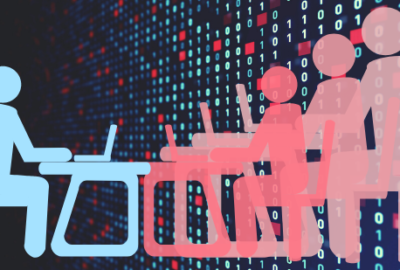
CMS untangles its data infrastructure to enable AI-powered fraud detection
Agency program offices have found plenty of opportunities to save time and money through artificial intelligence and automation pilots, but unlocking the full...
Agency program offices have found plenty of opportunities to save time and money through artificial intelligence and automation pilots. But unlocking the full potential of those tools requires agencies to spend time improving their data infrastructure.
The Centers for Medicare and Medicaid Services, for example, is looking at using AI and machine learning tools to flag fraud, waste and abuse. But first, Deputy Chief Information Officer Bobby Saxon said the agency needs to make its data systems — made up of 30 data warehouses and three enterprise data lakes — more cohesive.
“That kind of volume that is not well-orchestrated and not working well as an enterprise [and] causes us some challenges because we have so many different repositories of data — some of which are redundant and some of which are dirty because of the redundancy,” Saxon said Tuesday at ACT-IAC’s virtual ReImagine Nation ELC conference. “We’re never unable to get to the answer, but we do believe we could get to the answer faster and more efficiently and ultimately save money for the taxpayer by utilizing our IT systems more efficiently.”
Saxon said CMS is taking a long-term enterprise approach and a short-term tactical approach to implementing automation, where officials identify use cases that can show results in three-to-six months. The agency, he added, is also looking to improve the data literacy of its entire workforce, but will take a tiered approach to this training.
“Eighty percent of people in an organization, if you give them a good spreadsheet, and a couple of charts and graphs, and if you can automate feeding that to them, they have all the data analytics that they will ever need. And they will be very happy because now they can talk about the things that they care about,” Saxon said. “Then there’s 15% that understands the data better, as well as the tools better. What they really need is just access — get out of their way, give them access and let them take the tools they feel comfortable with and then go create the results that they need your result to create. And then there’s that 5% where you truly need a data scientist.”
The IRS is also is looking at using AI to analyze the millions of tax documents and financial records the agency receives every year and identify patterns that would indicate tax evasion or financial misconduct.
But Mitch Winans, a senior adviser with the IRS’ new Enterprise Digitalization and Case Management Office, said the agency is also looking at using AI to predict IT systems issues and reduce some of the operational risks associated with those systems.
As it migrates applications and business processes to its new cloud-based enterprise case management system developed by Pegasystems, the IRS is working on a strategy to decommission legacy IT systems well ahead of any actual plans to unplug machines.
“IRS has several legacy systems that are often disparate and disconnected. AI can potentially help us have more of an enterprise-wide view on these things and look into these various technology silos and monitor the different systems as one larger, interdependent network, and really help us quickly pinpoint those issues and the root causes of them so we can improve on and fix them right away,” Winans said.
Louis Charlier, the deputy CIO for Administration and Strategy at the Labor Department, said his agency has deployed three bots in its procurement shop. One of those bots, which handles contractor responsibility determinations, has saved the agency about 2,000 work hours. A market research bot, meanwhile, has saved the agency about 3,500 hours annually.
Labor’s Office of Human Resources is using AI to help screen candidate resumes and speed up the hiring process, and its Mine Safety and Health Administration is using the same technology to collect data on toxins and detect the risk of black lung.
The agency has also stood up a CXO dashboard that’s providing senior leadership access to key administrative data in one centralized location. Charlier said the dashboard has enabled agency executives to make evidence-based decisions.
“That’s going to be an important piece moving forward that we really want to build on. This is going to enable the proactive management of the department’s cybersecurity posture, it’s going to streamline and automate data calls, it’s a big part of where DOL is moving in the future, and we’re really excited to move forward with it,” Charlier said.
Copyright © 2025 Federal News Network. All rights reserved. This website is not intended for users located within the European Economic Area.
Jory Heckman is a reporter at Federal News Network covering U.S. Postal Service, IRS, big data and technology issues.
Follow @jheckmanWFED
Related Stories

USPTO looks to move RPA bots from employees’ laptops to ‘centralized’ platform




